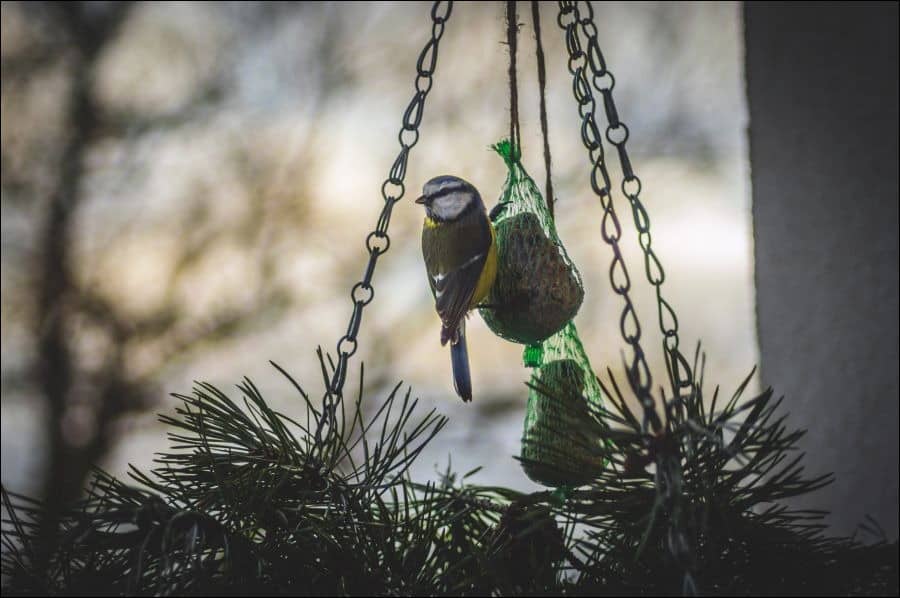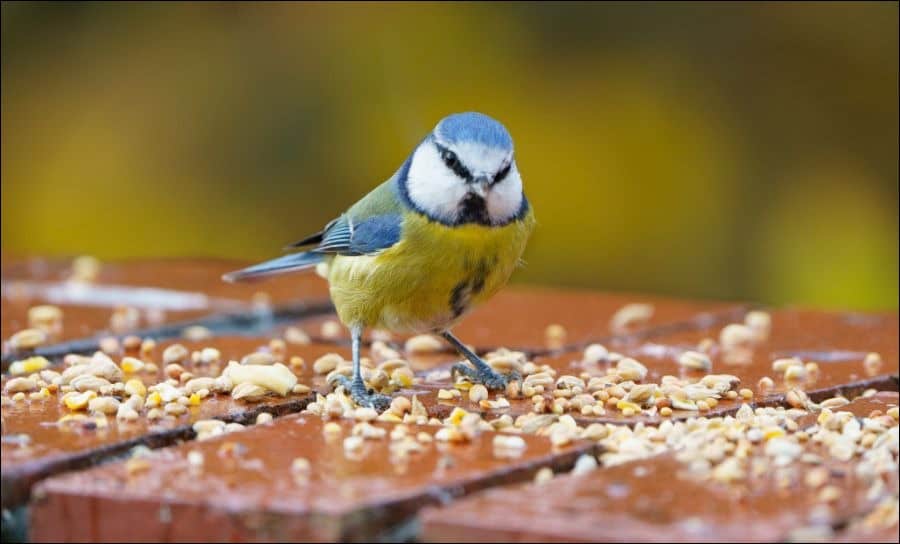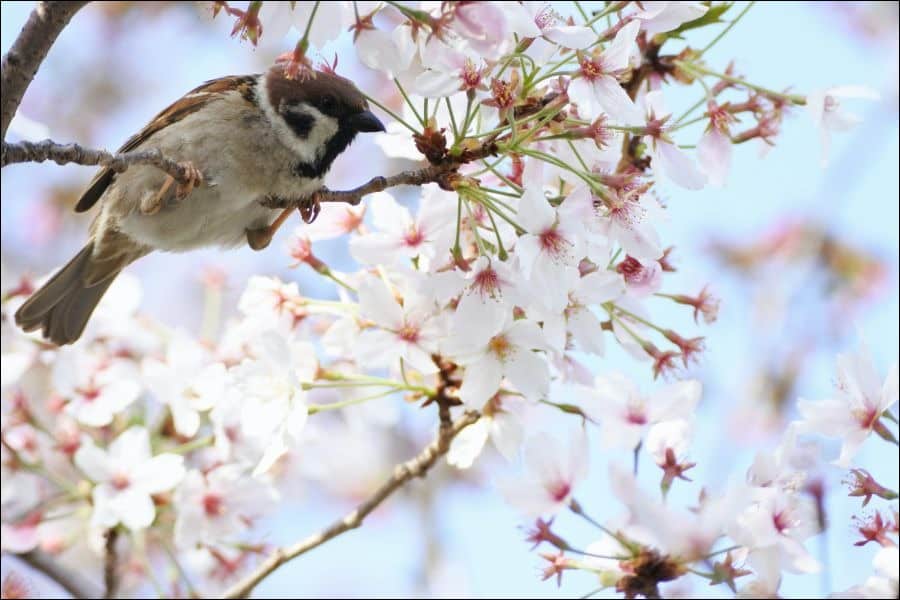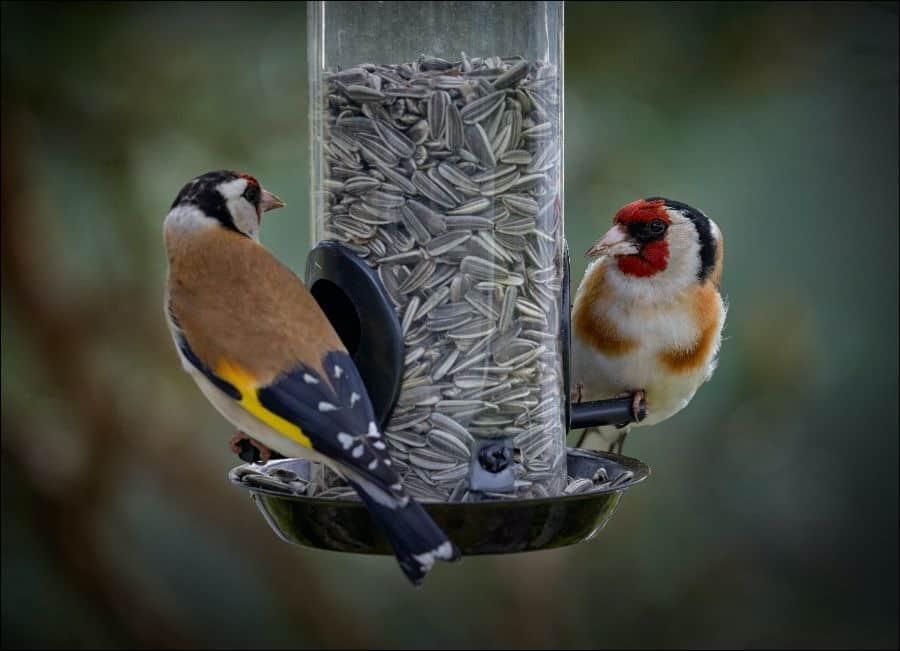There is not much that beats the feeling of bringing home a new fresh bag of birdseeds and refilling your bird feeders around the house. Watching the tiny creatures have a huge feast just outside your window and knowing you made their day. However, it happens that the bird seeds go bad before you had the opportunity to give them everything. This has happened to me a lot, and I will tell you how I resolved it and never had to throw out seeds ever again.
The best way to store birdseed is to keep it in a dry, cold place within metal containers. Bird suet can be kept in a freezer until it’s time to serve. While mice and other pests can easily chew through plastic, storing the seeds in metal containers is the best way to keep the seed safe.
The first time I brought home a 25 pounds bag of birdseed, I was so proud. I had planned in detail where to put every feeder in the garden, from type, size, and height. Everything was planned to the last detail—everything, except the storage of the bird food. The happiness wasn’t long-lived, and after almost one week, I found the bag with a large hole and some gifts—mice poop. I had stored the bag inside my garage, on the floor, in the corner. The worst place to store it. If it hadn’t been for the mice, the seeds would, regardless, have gone bad really quick.

How do I store birdseed in my garage?
Since that last incident, I have always placed the birdseed into metal tins inside a larger metal box. These boxes from Amazon have been a lifesaver. They are galvanized metal so, the mice have almost no chance of getting through. It’s a great bonus to have the chalkboard on the side. I use it to label the insides and write when I purchased it, so I know how old the seeds are. To not attract mice and rats, I place the birdseed into smaller metal tins inside the box. I use these, which I like because they are stackable, and the cover is hinged. I put stickers on them to know which container holds which seeds and when I purchased them.
If a flood, leakage, or something similar occurs, I have placed the metal boxes on a dolly so they aren’t placed directly on the ground. I have this dolly which makes it much easier to access and easier to move around the seeds.
How long can birdseed be kept?
If you store the birdseeds in a dry, cold space, where neither insects nor moisture can reach them, the seeds can easily hold up to a year. However, you will need to rotate them and move them around from time to time. If you keep them in metal tins as I do, you can shake them now and then.
Many seeds, like sunflower seeds, holds a high amount of oil inside them. When oil goes old, there’s a rancid smell, and you can almost feel a dry dust layer on them. If you notice a rancid or moldy smell, throw away all the seeds they were in contact with. Mold is toxic to birds and is lethal.

Can you refrigerate birdseed?
You can refrigerate birdseed and also keep them in the freezer. Keeping the seeds in a cold space keeps them fresher longer and helps them not to develop mold. However, you will need to keep them in a closed container like a ziplock bag inside the fridge or freezer.
Birdseed companies themselves recommend storing the birdseed in the freezer, and some birds like the Bluejays and cardinals even enjoy the colder seeds .
Can birdseed get too old?
Birdseed can get too old and usually holds for between six to twelve months if stored properly. It would be best to store the birdseeds in a dry cold place where it doesn’t come in contact with moisture. You will need to rotate the seeds regularly and never mix old seeds with new seeds. Make sure to smell the seeds from time to time to be aware of any developed odors. Seeds with a high oil content usually send out a rancid smell when they are getting too old.

How do you make birdseed last longer?
There are some important steps you will need to take to make your birdseed last longer. Not only is it key to store the seeds in a good environment where the seeds doesn’t exposes to moist or pests, it is also important take care of the seeds you already have served.
1. Make sure you have a good storage system for the seeds
I can’t stress this enough. If you make an effort and go and buy birdseeds, you will need to take care of it. If the seeds get eaten by mice, rats, and other pests or, even worse – get old, moldy, and rancid.
Through my experience, my best advice would be in storing the seeds would be to keep bird seeds in metal containers, stored in a larger metal container. I store mine in the coldest part of the garage. However, a shed is also a great place to store the metal box and containers as long as it is not exposed to moisture and you will be able to access it regularly to shake the seeds.
If you feed birds during winter, you will need to consider giving them suet balls. When they aren’t hanging in your garden, you should keep them in your freezer. If they aren’t kept in a cold environment, the fats will go bad and turn into almost a Crisco consistency.
2. Choose the right seeds for your local birds.
Regardless if you buy a cheap bag of seeds or a premium bag of seeds, it doesn’t matter if the birds in your area don’t like it. All birds like different types of seeds and food, and it’s important to know what the birds in your area like. I wrote a list of the 26 most common birds in the US favorite foods that may help you if you don’t know what your neighbor’s favorite foods are.
After you know which birdseeds are most popular in your area, you can divide them into different tin cans. This will help you greatly when feeding the birds.
Smaller birds don’t like to share bird feeders with bigger birds since the big birds can push the smaller ones around. Make sure you have different bird feeders for every type of birdseed. Be aware all birds don’t stay for the entire season, and birds switch depending on the season.
3. Placement of the bird feeders are just as important
When deciding where to put your bird feeders in the garden, there are some things you will have to take into consideration.
- Where the bird feels safe from predators. Where cats and other animals can’t get to them.
- Where you can easily refill them without any hassle, nothing is sadder than an empty bird feeder.
- Place the feeder as high as neither cats nor squirrels can’t reach them.
- Place the feeders where it isn’t windy. Otherwise, the seeds will fall easier, and the birds won’t be able to rest.
- Don’t hang it in front of windows. Although it might be tempting to check on the birds during their fest, they will crash into your window.
4. Take care of seed waste
Let’s face it. Birds lack the proper table manner. When they eat most seeds end up on the ground. This attracts squirrels, rats, deer, and other animals who also enjoy seeds.
You can prevent this by having a bird feeder that catches fallen seeds. There are some really great ones at Amazon that use hatch-on to the bird feeder. Like this one, for example.
With one of those below every feeder, you won’t have to refill the bird feeder as often, and the feeder won’t get crowded when birds have two floors to eat from.

What can you do with old birdseed?
If you have old birdseeds, which hasn’t yet spoiled or started to smell, but you know you have had them for a while, there’s one thing you might want to do.
You can sprout the old birdseeds and giving them one last chance. Sprouting seeds is really easy and the birds seems to like them more than regular seeds.
You will just need to rinse and soak the seeds a couple of time for them to sprout. It would also help if you had some apple cider vinegar to boost the sprouting. Below is a video explaining how to do it some easy steps.
How often should I change my bird’s food?
You need to check your bird feeder regularly, so it’s both containing bird food and hasn’t gone bad. The reason for birds not visiting your bird feeder may be due it’s either empty or has seeds that smell bad. Make sure to check the feeders weekly and clean them monthly.
Regarding your bird food storage, you should check it every time you fill your bird feeders. You should also during that time make sure to shake the seeds around in their tin so they don’t become stuck to each other or get soggy.
The easiest way to shake the seeds is to have them in metal tins. You just need to shake them around with the lid closed.

Conclusion
It would be best if you kept the birdseeds in a dry cold place. Either in your garage or a shelter in your garden. Preferably not on the ground, but upon a dolly instead. That way, it doesn’t get affected during a flood. It would help if you kept the seeds in a galvanized metal box so rats, mice, and other pests can’t chew through. Inside the metal box, you should keep the seeds in separate stackable boxes for every type of different seed mix you have. That way, you can keep track of the different seeds individually and also increase the ability to refill your bird feeders.
These three has been a life saver for me:
You can store both seeds and suet in the freezer or fridge to make them last longer. Usually, birdseed lasts for about 6-12 months but can last longer if you freeze them.
When seeds get too to be offered to birds, you will know it by the smell and the feel of the seeds. The smell is usually rancid but also moldy. The feeling of the seed usually is a bit dusty. Like you are removing a layer of dust when you feel them.
Important things for keeping your seeds longer include having a good and planned seed system. Where you know and keep track of purchase dates.
It’s also important to serve the right food to the right type of birds. Please get to know your local birds and what they do like to eat. The birds won’t eat if they don’t like it.
Plan out the perfect spots for your bird feeders. Be aware where the neighbor’s cat can’t reach the feeder or where it is too high for the squirrel to jump.
Take care of the waste easily. You can add a seed waste collector below your bird feeders so every seed the birds’ drop doesn’t fall to the ground but instead falls on a level below, like this inexpensive one on Amazon.
There also easy methods of building one yourself by using mesh.
If you think your unused birdseed will go bad soon, you can sprout some of the seeds—the birds like sprouted seeds more than regular ones, and it’s a super easy process. Check out the Youtube video above.
You should check up on your feeders weekly and clean them monthly. Your bird food storage should be checked weekly and shaken every time to ensure they aren’t building any bad bacteria.
